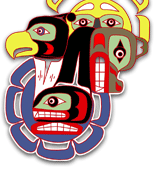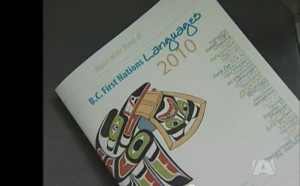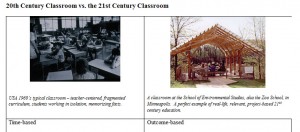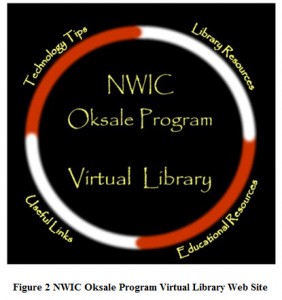Kainai Board of Education
As I was struggling with the weekly post (are Aboriginal communities different), I popped over to the Kainai Board of Education’s website. The Kainai reserve is the largest reserve in Canada. They took control of the schools on the reserve in 1988.
From the site:
“Within the context of Nitsitapi Culture and Language, the Kainai Board of Education educates Tribal members. Kainai schools offer programs to produce confident and culturally sensitive students. The Board seeks to have students become responsible, natural learners, aware of their special individual abilities in a metacognitive environment. These students value a tradtional and contemporary lifestyle. ”
Links from the site include each of the schools on the reserve.
http://kainaied.ca/
September 25, 2010 No Comments
K’omoks Treaty Site
It is troublesome to me to see how much is dedicated to the treaty and how little within these two connected sites (see “My Neighbours”) is dedicated to history and/ or education about either the K’omoks people or the land itself. I am not sure why, but I expect more. But really,why do I have any expectation in this regard at all? I mean you can’t deny any person or organization from the chance to earn a living and perhaps there is a reason for not sharing more about the culture and for dedicating the bulk of web efforts to commercial purposes. Maybe it is the best way? Maybe there isn’t much you can learn about the thousands-of-years history of a people on a two decade old technology? I think I will go ask somebody at the band office about the reasoning…..
September 25, 2010 No Comments
Saving First Nations Languages
This You Tube video talks about the status of First Nations languages in B.C. The commentary is based on the recently released “Report on the Status of B.C. First Nations Languages 2010”. This First Peoples Council report states that the Vancouver Island First Nation languages are in a “critical state” and further that there is an “urgent need to protect BC’s 32 First Nations languages. Of these languages, a handful are stated to be “severely in danger” with the majority being already nearly extinct. To put this in perspective, BC is reportedly home to 60% of the Indigenous languages of Canada.
The video clip includes interviews with a Central Saanich student, a Lauwelnew Tribal School Teacher and a Tsartlip Elder. Some positive steps towards language recovery are also described.
To view the video: https://www.youtube.com/watch?v=KzfgvqkoTVM
To view the report: www.fphlcc.ca
September 25, 2010 No Comments
21st Century Schools Website
While researching for my term paper I came across the 21st Century Schools Website. This US-Based , but globally intended, Website advocates for a “new paradigm” in education. They believe that although the tools of modern technology are available for collaborative/innovative learning, they are not currently used to their fullest.
If you navigate to the “What is 21st Century Education? Tab, you’ll find a good description of the site and what it seeks to accomplish. Scroll down this page to find a great summary table (image below) of the differences between 20th Century education and 221st Century education. After that, check out the “Curriculum and Instruction” and “Resources” tabs for many interesting and useful links.
September 25, 2010 No Comments
An Indigenous Approach to Creating a Virtual Library of Education Resources
This article describes how students in the “Library Instruction and Information Literacy” class in the Graduate School of Library and Information Science at the University of Texas at Austin incorporated a service-based learning model drawing on indigenous learning styles to create a virtual library for students and educators at a tribal college. The project deliverables were planned for the Northwest Indian College (NWIC) Teacher Training Program, Oksale and were based on the theories of Native American educator Dr. Gregory Cajete.
Cajete’s theory describes the prescription for a fulfilled life through the cycle of “being, asking, seeking, making, having, sharing, and celebrating”. This cycle was seen as a means to understand (in Cajete’s words):
- One’s true face (character, potential, identity)
- One’s true heart (soul, creative self, true passion)
- One’s foundation (true work, vocation)
The design of the site (see Figure 2) used traditional Lummi colors (black, red, white, and yellow) and images (raven, frog, eagle, and salmon) to increase users’ familiarity and comfort with the site.
Cajete asks educators to “engender a commitment to service rather than competition, promote respect for individual, cultural, and biological diversity, and engage students in learning processes that facilitate the development of their human potential through creative transformation”.
September 25, 2010 No Comments
Native Languages of the Americas: Preserving and promoting American Indian languages
http://www.native-languages.org/
Native Languages of the Americas: Preserving and promoting American Indian languages
This is a huge database of information relating to the languages of the First Nations peoples. It is run by a non-profit organization based in Minnesota.
The Blackfoot section for example (http://www.native-languages.org/blackfoot.htm) contains links to the Blackfoot alphabet, vocabulary, pronunciation guides, and common words grouped by themes. Because it is an oral language, all of the words are written phonetically using the English language. This does not translate to the tongue. For example, the word for bear, is spelled as “kiááyo.” When heard spoken however, it sounds more like “ghuuy-yoo.”
These resources would be best used by someone who already has a grip on the language. My experience with the language is that there are many nuances of pronunciation that are very difficult. I know many people who can understand the language, but can not speak it. These resources will not be much use for anyone at this level. I have witnessed an elder correcting a person’s pronunciation of a word repeatedly. Without that kind of immediate feedback, a person will not be able to fully learn the language.
These shortcomings could be addressed to some degree with video and audio clips. At least the learner could hear the words as they are supposed to be spoken.
September 25, 2010 No Comments
Improving Education on Reserves: A First Nations Education Authority Act
This is an interesting paper offered by the Caledon Institute that discusses the 2008 perspective on the present state of education for on reserve students, the Canadian Federal Government’s stance to this condition, and a prescription for improving education for on reserve students. This paper provides a really good summary and makes for interesting reading. The following is a very brief synopsis.
Present State (2008) and Canadian Government’s Stance
- 1996 – 60% of First Nations on reserve residents aged 20-24 had not completed high school or obtained an alternate diploma. (From Canadian Census data)
- 2001 – Statistic was unchanged.
- 2006 – Statistic was unchanged.
- Students now require more than grade 12 education to succeed, however grade 12 is the gateway to higher education.
- Canadian government (Indian and Northern Affairs Canada 2004) is in unanimous agreement on the desperate need for improvement in education for those living on reserves.
- Data suggests that funding for on reserve education is similar to provincially funded schools although this is not the perception of First Nations peoples.
- There is consensus on the need for parity for First Nations schools.
Prescription for Improving On Reserve Education
- Agreement that there is a need for money + good schools
- There is also a need for the infrastructure to support and maintain a good education system addressing the areas of curriculum development and capital facilities planning.
- The Cree School Board, recognized under the Quebec Education Act is an example of such a system.
- For those interested, there is the following reference to additional models: “Sharing Our Success: Ten Case Studies in Aboriginal Schooling” (page 11)
- The paper goes on to describe the background and role of the First Nations Education Authority Act that seeks to address the need for First Nations infrastructure planning across the Provinces.
http://www.caledoninst.org/Publications/PDF/684ENG.pdf
—————————————————————————————
For more information about the Caledon Institute, here is a brief summary quoted from their Website:
The Caledon Institute is a social policy think tank.
“Established in 1992, the Caledon Institute of Social Policy is a private, non-profit organization with charitable status. It is supported primarily by the Maytree Foundation, located in Toronto. Caledon is an independent and critical voice that does not depend on government funding and is not affiliated with any political party.
The Caledon Institute of Social Policy does rigorous, high-quality research and analysis; seeks to inform and influence public opinion and to foster public discussion on poverty and social policy; and develops and promotes concrete, practicable proposals for the reform of social programs at all levels of government and of social benefits provided by employers and the voluntary sector. Caledon’s work covers a broad range of social policy areas including income security (e.g., pensions, welfare, child benefits, Employment Insurance, benefits for Canadians with disabilities), community capacity-building, taxation, social spending, employment development services, social services, disability supports and health.”
September 25, 2010 No Comments
Head Smashed in Buffalo Jump
http://www.head-smashed-in.com/home.html
Rather than taking the day off like we have in previous years, our school went on a field trip on “Treaty 7 Day.” The former holiday was held to note the signing of Treaty 7 between the Queen and the people of the Blackfoot confederacy. We went to Head Smashed In Buffalo Jump, just west of Fort McLeod, Alberta. It was especially nice that the guide for my group was a former student of mine. He delivered a really professional tour that my students found very interesting. I again thought about Bowers (2000) and the idea of cultural neutrality as we watched the new video in the interpretive centre’s theatre. The old video was made in the ’80s that used a dead (and frozen) buffalo that was pushed over the cliff. Each time I saw the film the audience laughed as the buffalo bounced on its way to the bottom. The new film uses computer animation to show what it would be like when a herd was chased off of the jump. It may be that as computers evolve away from English language machines and into more intuitive tools that utilize voice and image, they are becoming more culturally neutral.
Bowers, C., Vasquez, M., & Roaf, M. (2000) Native people and the challenge of computers: Reservation schools, individualism, and consumerism.” American Indian. 24(2), 182-199.
September 25, 2010 No Comments
Bringing Back Blackfoot
http://www.ffwdweekly.com/article/news-views/city/bringing-back-blackfoot-3495/
The article from Fast Forward Weekly Magazine provides insight into the challenges facing the survival of the Blackfoot language. The story centres around a 75 year old elder from Siksika named Rachel Ermineskin. Having endured residential schools, she has been able to maintain her language. Before moving back to her home on the reservation (just outside Calgary’s city limits), Ermineskin participated in Blackfoot language courses at the University of Calgary.
The article also discusses how difficult the language is for people who grew up speaking English. From my own experience, I have seen many young people who can understand Blackfoot, but who are unable to speak it. Many of my students know the “slang” words in Blackfoot, but that is all.
The story also discusses the future of the language. With over 3,000 people speaking the language today, it has the potential to survive. In my area, the Kainai board of education has introduced Blackfoot immersion classes for young students. I recently attended an event where a chorus of children from grades one and two sang O Canada in Blackfoot. That definitely gives hope for the future.
At the end of the piece, Ermineskin is quoted as saying, “We have the technology to preserve these kinds of things, so why not?” Even though she is on the reserve and can not commute to the university for classes, she can still participate through the use of a computer. While Bowers (2000) may be right in saying that technology is not culturally neutral, it can still facilitate interactions. An application of technology such as an elder using a program like Skype to communicate directly will not have the same bias as the printed word.
Bowers, C., Vasquez, M., & Roaf, M. (2000) Native people and the challenge of computers: Reservation schools, individualism, and consumerism.” American Indian. 24(2), 182-199.
September 25, 2010 No Comments
Classroom English will be the death of Aboriginal languages
This Australia-based article discusses concerns around reducing the amount of time spent teaching in the local (Aboriginal) language down to a mandated one hour/day. Several reasons for doing so are listed, including the argument that Aboriginal employment is very low because education levels are very low because education is primarily conducted in English. It is argued that forcing students to learn in English will increase English literacy rates along with providing students with an education.
The author of this article disagrees with this strategy, noting that there are flaws in the logic, including the fact that low education levels are not the only reason for low employment. There are other reasons that can be cited, such as bureaucratic regulations requiring completion of literacy courses prior to gaining access to certain jobs.
Some of the areas of concern cited for moving to a one hour a day education in English are:
- Poor attendance will likely become lower
- Parental support may drop
- Turnover of teachers may increase
- Indigenous languages are further at risk
The article goes on to discuss the importance of preserving Aboriginal languages.
For those interested, several responses to the article follow it.
http://www.crikey.com.au/2008/11/20/classroom-english-will-be-the-death-of-aboriginal-languages/
September 25, 2010 1 Comment





